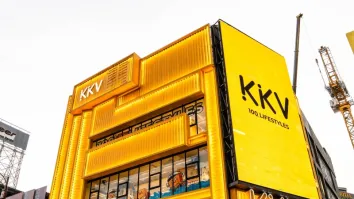Skipping the middlemen… Three things D2C companies are getting right
D2C companies use an array of digital tools to connect with consumers.
The rise of e-commerce has given a huge nudge for Direct-to-Consumer (D2C) players to reach their desired customers. Is the digital era more favourable to this group of retailers with their nimble business development approaches and millennial-friendly marketing strategies?

D2C brands are using a meticulous combination of social media, data and artificial intelligence (AI) to glean profound insights of their target audience.
The direct-to-consumer (D2C) brands of today are skipping the middleman and using a digital ecosystem to reach out to customers. In South-east Asia alone, the Internet economy is a whopping US$50 billion — driven mainly by massive e-commerce companies. As of January this year, a staggering 920 million people in the region had mobile subscriptions.
With mobile connectivity at 141% and an Internet penetration rate of 58%, it’s no wonder that brands are taking their operations in South-east Asia online. D2C companies have burst upon the scene because of their highly accessible nature that uses an array of digital tools to connect with consumers.
1 Social media to provide a curated customer experience

Emily Hamilton Co-Founder and Chairwoman, Supernova
Companies with a wholly digital existence connect with their consumers in a truly unique way, deploying social media to provide online customers with an immersive experience. By establishing a consistent presence on multiple online platforms, D2C companies have been able to develop genuine, long-lasting relationships with their target audience.
These brands directly and effectively communicate their marketing message in the form of posts, videos and other interactive visual and aural media.
Consumers can access the content no matter what time they visit the brand’s pages or which type of screen they use and let the brand know their opinion of the products by liking, commenting, sharing and reviewing. Thanks to this feedback, brands can fine-tune their offerings according to the real-time suggestions and views of netizens.
D2C brands use their social media presence in many ways to connect with consumers. For instance, a Manhattan based indoor cycle-manufacturer and lifestyle streaming service provider uses its instructors to engender consumer loyalty and give rise to communities of fitness enthusiasts.
An online luggage-maker uses a combination of in-house and user-generated Instagram posts to create a visual tapestry of travel and lifestyle content.
2 Using data to better understand consumers
Thanks to the digital era, such augmented interaction between consumers and brands allows brands to collect massive amounts of personal data. Gone are the days when companies could hook consumers with product offerings, and if companies want to remain relevant in the minds of today’s hyper-engaged consumers who seek instant gratification, they must step up their game and include the customer in their decision making.
D2C brands are exemplary at this, using a meticulous combination of social media, data and artificial intelligence (AI) to glean profound insights of their target audience. From personalised suggestions and curated birthday giveaways to chatbot assistants, companies are borrowing a page from the book of successful D2C brands.
Several South-east Asian e-retailers use retargeting via email or electronic direct mailer (EDM) to remind customers about items they had viewed but not purchased, and provide email recommendations containing items similar to previous consumer purchases.
A global music streaming service even generates customised playlists, filled with song suggestions based on previous listens. These are a few instances of brands tapping on data and technology to supplement consumer experience.
3 Emergence of novel e-retail formats
In the subscription model, the customer is at the heart of the business. After all, they get to choose the product themes and combinations that appeal to them. As the specifics of the items are usually not revealed to the subscriber before they receive the subscription box, the novelty of receiving surprises keeps consumers coming back for more.
Subscription boxes are used by niche D2C companies to reach a broader customer net, making use of consumer profiles and data to predict a product assortment. Coupled with efficient logistics and delivery services, D2C companies offering subscription services value-add to their consumers’ lives.
In South-east Asia, subscriptions models are offered by D2C brands operating in a variety of industries: beauty, beverages, books, fashion and even food. Despite having a physical presence, a Singapore-based book retailer offers curated subscription boxes and these subscription boxes are often used as a supplementary service for e-commerce and D2C brands to please consumers.
With many bricks-and-mortar brands struggling to make their mark on the social space, D2C companies provide a breath of fresh air in terms of acquiring market share, decreasing costs, increasing product innovation, and more importantly — building the digital brand narrative.
While traditional companies will not be losing their footing in the retail industry anytime soon, the current scenario is ripe for fresh, young brands to make an impact. In the digital era, D2C brands seem to reign supreme with their agile business development methods and millennial-friendly marketing tactics — something which legacy companies have a harder time adapting to because of preexisting mechanisms. Will we see retail giants hold their own in a battle against their younger, digitally-nimble peers?
Only time will tell…



















 Advertise
Advertise





